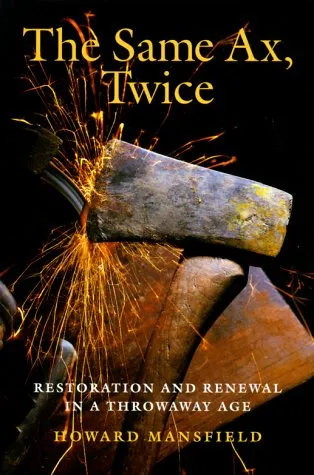The Same Ax, Twice: Restoration and Renewal in a Throwaway Age
By (author): "Howard Mansfield"
Genres:History books Museums books

ISBN1584650281
ISBN139781584650287
AsinThe Same Ax, Twice: Restoration and Renewal in a Throwaway Age
Original titleThe Same Ax, Twice: Restoration and Renewal in a Throwaway Age
An old farmer boasts that he has used the same ax his whole life -- he's only had to replace the handle three times and the head twice. In an eclectic, insightful meditation on the powerful impulse to preserve and restore, Howard Mansfield explores the myriad ways in which we attempt to reconnect with and recover the past -- to use the same ax twice. Mansfield's In the Memory House (hailed as a "wise and beautiful book" by the New York Times) explored the complex interconnections of memory and place, showing how the loss of a sense of place in our ever more mobile society has profoundly impoverished our collective memory. Now he tracks our need to reconnect with place and memory. Moving easily between meditative reflection and compelling insights, he offers lively journalistic descriptions of some of the extraordinary people who are imaginatively, lovingly, sometimes obsessively, realizing their own visions of the restorative impulse. Mansfield himself is deeply engaged in the search for restoration. He travels with Civil War reenactors to help recreate the Battle of Antietam; he enrolls in auctioneer school to observe the endless recycling of artifacts, and he compares this process to the sterile preservation of these same objects in displays and museums; he tours 18th-century houses that have been variously restored to their "original" condition or stripped to their essence; he observes the ever-ongoing work of preserving the USS Constitution, "Old Ironsides," a ship that has been replaced over the years board by board. The act of restoration, Mansfield concludes, whether it's rebuilding antique engines or reviving the village model of community organization, must contain an elementof renewal. Rejecting the sentimentality of nostalgia and the superficiality of commercial appropriation, Mansfield argues for an understanding of restoration that is concerned as much with the future as it is with the past, that preserves and communicates a spirit as well as a form.